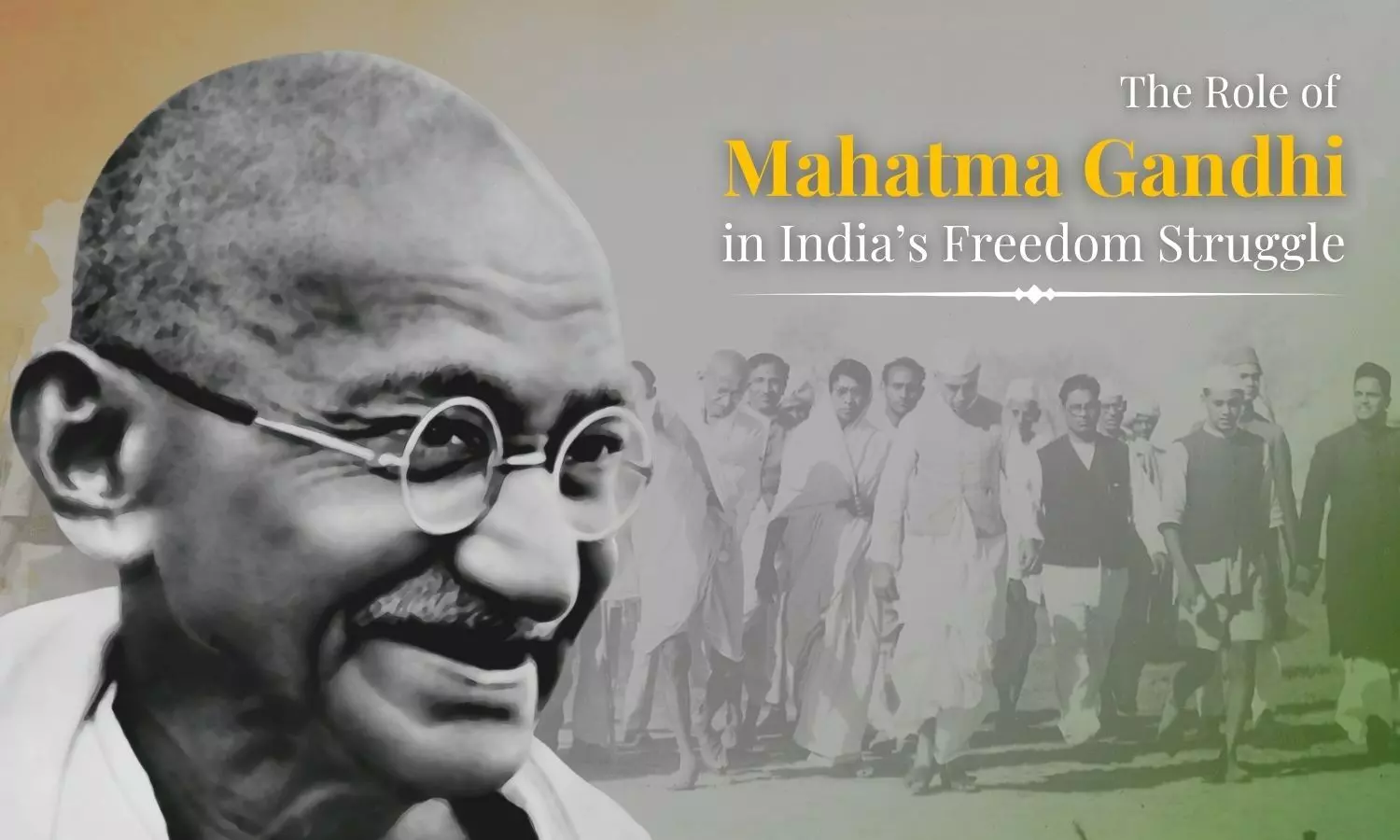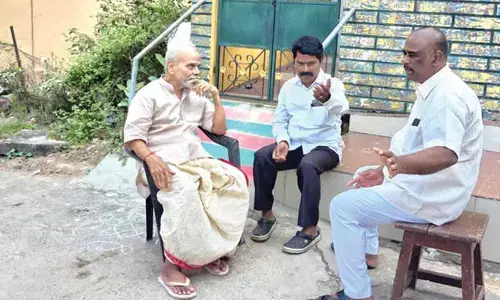Mahatma Gandhi's Role in India’s Freedom Struggle | Legacy of Non-Violence

Mahatma Gandhi's Role in India’s Freedom Struggle | Legacy of Non-Violence
Mahatma Gandhi’s philosophy of nonviolent resistance and leadership in the Quit India Movement.
Gandhi Jayanti, celebrated on October 2nd, marks the birth anniversary of Mahatma Gandhi, one of the most influential leaders in Indian history. Known as the Father of the Nation, Gandhi's approach to gaining independence for India was unique and revolutionary. His philosophy of non-violence, civil disobedience, and moral courage continues to inspire people worldwide. Gandhi’s life was devoted to achieving Indian freedom from British rule, and his contribution to the freedom struggle left a profound impact on the nation's destiny.
Early Life and Ideals
Born in 1869 in Porbandar, Gujarat, Mohandas Karamchand Gandhi, who later earned the title of "Mahatma" (Great Soul), began his journey as an ordinary student. After studying law in England, Gandhi moved to South Africa, where his experiences with racial discrimination became the catalyst for his involvement in civil rights. This period played a critical role in shaping his ideals of non-violent resistance, a principle he carried with him when he returned to India in 1915. Gandhi’s time in South Africa gave him the clarity to pursue justice through peaceful means and stand up against oppression without using violence.
Gandhi’s Role in Independence
Gandhi’s return to India marked the beginning of a transformative phase in the country’s freedom struggle. He quickly became a central figure in the Indian independence movement, advocating for the rights of the common people and urging self-rule, or Swaraj. Gandhi’s role in independence was built on two key pillars: mass mobilisation and non-violent protest. His belief was that political freedom must be paired with social reform, which included the elimination of untouchability, promotion of rural self-reliance, and religious harmony.
Non-Violent Resistance and Satyagraha
One of Gandhi's most powerful contributions to India’s fight for freedom was his principle of non-violent resistance, also known as satyagraha. This method of protest involved resisting British policies and laws through peaceful means, without retaliation or violence. Gandhi’s first major application of satyagraha in India was during the Champaran movement in 1917, where he led indigo farmers in a successful campaign against the oppressive practices of British landlords.
This approach became a hallmark of Gandhi’s philosophy. He believed that enduring suffering for a just cause would eventually lead the oppressor to recognize the moral wrongs of their actions. His practice of nonviolent resistance appealed to a broad spectrum of Indians and united people across different communities and social strata.
Civil Disobedience Movement
One of the most notable campaigns Gandhi led was the civil disobedience movement in the 1930s, which took direct aim at British economic policies. The most iconic moment of this movement was the Salt March of 1930, where Gandhi and his followers walked 240 miles from Sabarmati Ashram to Dandi on the Arabian Sea coast. By making salt from seawater in defiance of British laws, Gandhi ignited a national protest. The act, seemingly small, symbolised the growing rejection of British rule and spurred widespread participation in non-violent resistance across the country.
The Salt March was more than just a protest against salt taxes. It was a symbolic declaration that India no longer needed British rule to survive. The civil disobedience movement demonstrated Gandhi’s ability to mobilise large sections of the population in a peaceful, disciplined manner.
Quit India Movement
In 1942, with World War II raging and India still under colonial rule, Gandhi launched the Quit India Movement, demanding an immediate end to British rule. Unlike previous movements, the Quit India Movement was marked by Gandhi's famous call to “Do or Die,” urging Indians to take decisive action for independence. Despite heavy repression, including the arrest of Gandhi and other leaders, the movement shook the foundations of British rule in India.
Though the Quit India Movement was met with harsh retaliation by the British authorities, it signalled the final phase of India's journey to independence. The movement showed the British Empire that the Indian populace was united and determined to win freedom, regardless of the costs.
Gandhi's Vision of a Free India
For Gandhi, political independence was not the sole goal. He envisioned an India where social justice, economic self-reliance, and religious tolerance were embedded in the national fabric. Gandhi championed rural development, the dignity of labour, and the use of locally made goods as part of his swadeshi movement, encouraging Indians to boycott British goods and promote indigenous industries.
His emphasis on non-violence extended beyond the political world. Gandhi advocated for harmony between Hindus and Muslims, the upliftment of the untouchables (whom he called Harijans or "Children of God"), and the empowerment of women. Gandhi’s legacy is defined not just by his contributions to the political landscape but also by his profound impact on social and economic reforms in India.
The Legacy of Mahatma Gandhi
Gandhi’s influence extends far beyond India’s borders. His principles of non-violence and peaceful resistance inspired leaders like Martin Luther King Jr. and Nelson Mandela in their respective struggles for equality and justice. His ideas remain deeply relevant today, serving as a blueprint for peaceful protest and civil rights movements across the globe.
While Gandhi did not live to see the long-term results of his vision—he was assassinated in 1948, just months after India achieved independence—his ideas and values continue to shape modern India. Gandhi's commitment to non-violence and his emphasis on truth and justice have left an indelible mark on the world.
Mahatma Gandhi’s contribution to the Indian independence movement was unparalleled. His unique approach to achieving freedom through non-violent resistance, coupled with his powerful leadership during movements like civil disobedience and the Quit India Movement, reshaped the course of Indian history. Gandhi’s unwavering belief in truth and justice, combined with his ability to unite millions of Indians under a common cause, made him one of the most revered figures in the struggle for freedom. Gandhi’s life and ideals are celebrated every year on Gandhi Jayanti, reminding the world of the power of peaceful protest and moral courage.




















